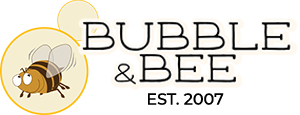Exposing Japanese Honeysuckle Extract
I've been exposing Japanese Honeysuckle Extract for the synthetic preservative it is for more than a decade.
The controversy started in 2009 with an expose that was published on the Organic Consumers Association website. Written by Elizabeth Moriarty, a phytochemist and organic inspector, the article states that parabens, naturally-occurring and synthetic, can be hidden in Japanese Honeysuckle
Extract. Moriarty states that:
It is a highly processed and concentrated paraben extraction that may or may not be contaminated with synthetic parabens where it is manufactured in Singapore. I am particularly distressed by the fact that so many companies are evidently using the latter version of "Japanese Honeysuckle Extract" and simultaneously claiming "NO PARABENS" on their labels.
There was much discussion and confusion that ensued regarding what’s actually in JHE for a year or two, and finally I got to the bottom of the issue. After I pressured their US distributor, the manufacturer opened up to me and disclosed how the product was made and what was really in it. At first everyone was thought it contained the natural compound parabens are based off of, para-hydroxybenzoic acid.
But Dr. Bala, the owner of Campo Research made some clarifications:
In the Verification of the description, you may find a variety of phydroxyBenzoic Acid of the Salcyclic class (ie of Aspirin) slightly present in Campo Plantservative, of which I believe is what Ms ****** ****** has confirmed as P-hydroxybenzoic Acid.
Dr. Bala is saying that the type para hydroxybenzoic acid present in the product is actually 2-hydroxybenzoic acid, which has the same combination of atoms, just arranged in a slightly different shape (called an isomer). 2-hydroxybenzoic acid is also known as salicylic acid.
From the information Dr. Bala has provided, we now know that most likely Japanese Honeysuckle Extract contains salicylic acid.
■ Many studies have shown Salicylic acid to cause developmental abnormalities during pregnancy. Most of these studies, however, pertain to salicylic acid being taken internally. No studies of the reproductive/developmental effects of external/dermal application are available. (Source)
■ Salicylic acid is a phenolic aromatic hydrocarbon. This is the same class of chemicals as BPA and other estrogen mimicking compounds. (Source) According to a 1973 RTECs study, salicylic acid does act as a xenoestrogen. More recent studies are not available on the subject.
■ The FDA advises that because salicylic acid is a beta hydroxy acid that removes dead skin cells and reveals newer cells, it can increase one's susceptibility to UV radiation. They suggest that sunscreen or sunblock ingredients be used with any product containing salicylic acid to counteract the damaging effects of UV radiation. The FDA is studying the long-term effects of salicylic acid (Source)
There are other problems with JHE other than the salicylic acid as well. This is all from the materials that Dr. Bala e-mailed to me:
■ A small amount of butylene glycol is used as a solvent in its production, and it is present up to 2.5% of the finished product.
■ Once the product is filtered, it then undergoes a process called Collusion-induced Dissociation. Basically, they take the extract and put it in a vacuum and spin it around at an incredibly high speed -- so fast it actually breaks the molecular bonds of the original compounds to create new molecules that aren't present in nature.
■ Japanese Honeysuckle Extract uses nanotechnology. Once the extract has been taken from the flowers, it is run through a nano-sized filter two times, resulting in biologically-based nanoparticles.
■ They claim that Plantservative (the trademark name for JHE) doesn't undergo any "animal testing" however, it is tested on embryonic stem cells.
Embryonic stem cells are usually taken from human fetuses that are just a few hours old, comprised of just a few cells. They are typically created in a lab and then used for testing. You can make your own decision if you accept the use of this practice by using this ingredient, depending on your personal beliefs.
The bottom line: Japanese Honeysuckle Extract is not a simple natural extract. It is created using very sophisticated technology, (nanoparticles, Collusion-Induced Dissociation, etc) contains salicylic acid (a chemical with several risks), contains a small amount of butylene glycol, and is made up of other unknown compounds that do not occur in nature. Companies use this preservative to make their product look more natural on the ingredients list, but it's a highly-processed synthetic.
Note: There are true organic and natural Japanese honeysuckle extracts that are made with traditional methods. They're typically used for scent or conditioning/softening properties. These extracts have no known problems.
Recent Posts
-
Vegetable Emulsifying Wax NF
What is Vegetable Emulsifying Wax NF?Vegetable Emulsifying Wax NF is a blend of chemicals, namely ce …16th Aug 2024 -
Tocopherol vs. Tocopheryl Acetate: What's the Difference?
Let's look at the differences between tocopherol vs tocopheryl acetateThere are two forms of vitamin …16th Jul 2024 -
Are Essential Oils Toxic?
The following comment was made in a Facebook group for which I'm an admin. It was a lot to unpack in …16th Jul 2024
